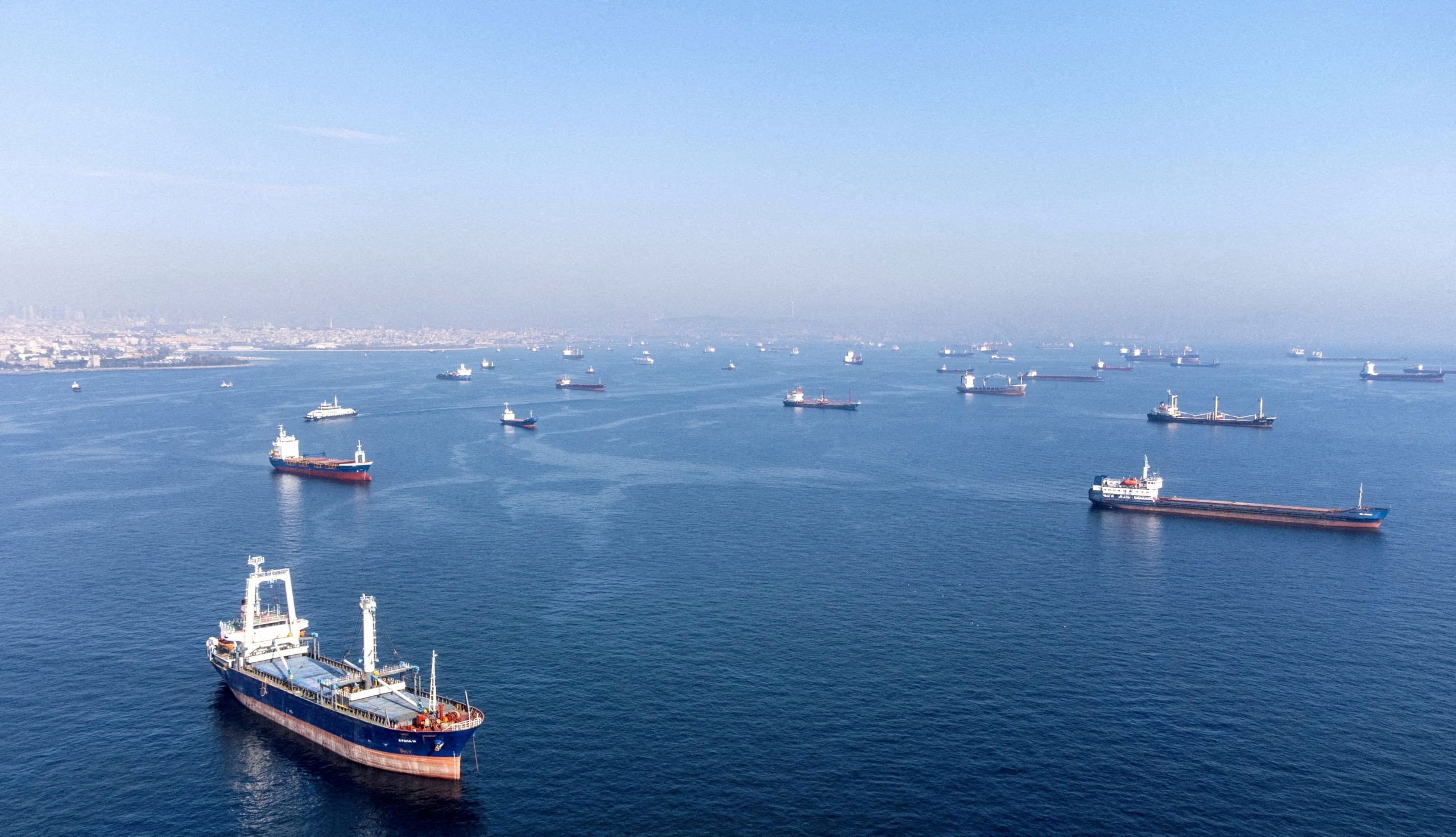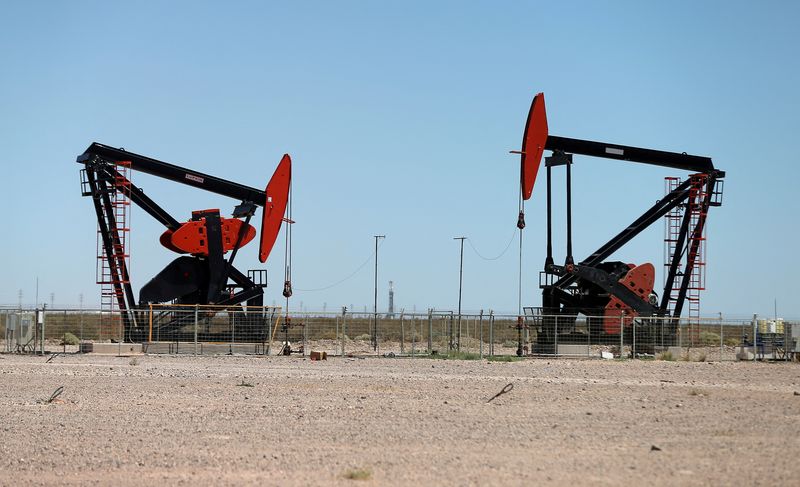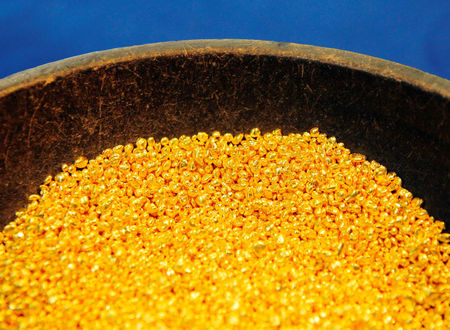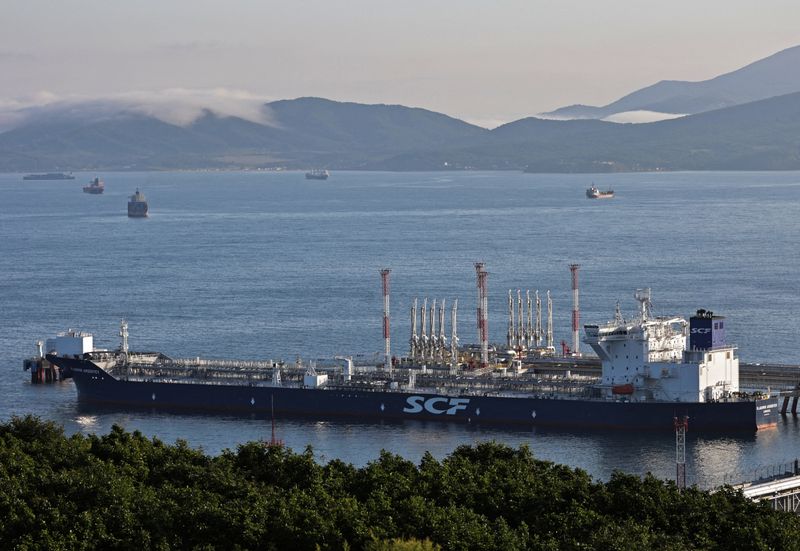Commodities
Russia and Ukraine say ammonia pipeline was damaged, in potential blow to grain deal

A pipeline used to transport ammonia fertilizer from Russia via Ukraine that may be central to the future of the Black Sea grain deal has been damaged, according to both Kyiv and Moscow, potentially complicating talks around the accord.
Russia’s defence ministry said a “Ukrainian sabotage group” had blown up a section of the pipeline on Monday night near the village of Masyutivka in Kharkiv region. The village is on the frontline between Russian and Ukrainian troops.
“As a result of this terrorist act, there were civilian casualties. They have been provided with necessary medical assistance,” the Russian ministry said in a statement.
“At present ammonia residues are being blown out of the damaged sections of the pipeline from Ukrainian territory. There are no casualties among Russian servicemen.”
Oleh Sinehubov, the governor of Ukraine’s Kharkiv region gave a different version of events. He said in a statement posted on Telegram that Russian troops had shelled the pipeline.
Six Russian shells had landed near a pumping station near Masyutivka at around 5:45 p.m. (1445 GMT) on Tuesday, nearly 24 hours after Moscow alleged Ukraine had blown up the same pipeline, he said.
Reuters could not independently verify the Russian and Ukrainian assertions.
The Russian section of the pipeline is safe and under control, Russian agencies reported, citing the operating company.
“The Russian part of the ammonia pipeline, which belongs to Transammiak, is securely cut off from the Ukrainian part and is in a safe and serviceable condition under constant control,” the Interfax news agency cited the company’s press office as saying.
Resumption of supplies via the Tolyatti-Odesa pipeline, the world’s longest ammonia pipeline, may be key to the renewal of the Black Sea grain export deal. The pipeline has been closed since Russia invaded Ukraine in February 2022 in what it called a “special military operation”.
Russia has repeatedly cast doubt on whether it will continue to renew the grain deal, brokered by the United Nations and Turkey, which facilitates agricultural exports from Ukraine via the Black Sea.
Among the conditions for renewal that Moscow has put forward is resumption of the Togliatti-Odesa pipeline.
The United Nations has not received any official notification about damage to the pipeline, U.N. spokesperson Stephane Dujarric said on Wednesday.
“Any threat to this pipeline is indeed of concern,” Dujarric told reporters. “We’re continuing to engage with the parties on the ammonia exports, regardless of what may have happened.”
Moscow has said it will limit the number of ships allowed to travel to Ukraine’s Pivdennyi port near Odesa under the deal until the pipeline is restarted.
In a briefing on Wednesday, Russian Foreign Ministry spokeswoman Maria Zakharova said it would take between one and three months to repair the damaged section of the pipeline.
“The ammonia pipeline was one of the linchpins of the implementation of the agreements made in Istanbul on July 22, The (pipeline) was key to global food security,” Zakharova said.
Commodities
Oil prices on track to snap two-week losing streak

By Ahmad Ghaddar
LONDON (Reuters) -Oil prices rose on Friday, on track to end higher this week after two straight weeks of losses, after a top U.S. official expressed optimism over economic growth and as supply concerns lingered due to conflicts in the Middle East.
futures gained 19 cents, or 0.2%, to $89.20 a barrel at 0927 GMT, and U.S. West Texas Intermediate crude futures rose by 25 cents, or 0.3%, to $83.82 a barrel.
Brent has gained 2.2% so far this week, while WTI is up 0.8%.
U.S. Treasury Secretary Janet Yellen told Reuters on Thursday that U.S. GDP growth for the first quarter could be revised higher, and inflation will ease after a clutch of “peculiar” factors held the economy to its weakest showing in nearly two years.
U.S. economic growth was likely stronger than suggested by weaker-than-expected quarterly data, she said.
Data showed that economic growth slowed in the first quarter, and prior to Yellen’s comments, tremors from an acceleration in inflation had weighed on oil prices as investors calculated that the Federal Reserve would not cut interest rates before September.
The personal consumption expenditures (PCE) price index excluding food and energy rising rose at a 3.7% annual rate after a 2.0% pace in the fourth quarter of 2023, the data showed.
“US GDP growth of 1.6% that … came in under expectations might also be deemed a welcome development confirming the effectiveness of the recent monetary tightening, nonetheless it was the PCE price index that drove sentiment,” PVM Oil analyst Tamas Varga said.
remove ads
.
Elsewhere, supply concerns as tensions continue in the Middle East also buoyed prices early in the session.
Israel stepped up air strikes on Rafah after saying it would evacuate civilians from the southern Gazan city and launch an all-out assault despite allies’ warnings this could cause mass casualties.
Commodities
Gold prices weaken, eye break below $2,300 as rate jitters persist

Investing.com– Gold prices fell in Asian trade on Thursday and were close to breaking below key levels as waning safe haven demand and the prospect of higher-for-longer U.S. interest rates battered the yellow metal.
Bullion prices were nursing a sharp drop from record highs over the past week, as a potential conflict between Iran and Israel did not escalate as markets were fearing. This largely dented safe haven demand for the yellow metal.
Waning safe haven demand left gold vulnerable to headwinds from U.S. rates, given that higher-for-longer rates push up the opportunity cost of investing in bullion.
fell 0.1% to $2,313.62 an ounce, while expiring in June fell 0.6% to $2,325.05 an ounce by 00:26 ET (04:26 GMT).
Strength in the – which remained close to recent five-month peaks, also pressured metal prices.
Gold eyes $2,300 support, more rate cues awaited
Spot prices were now close to breaking below the $2,300 an ounce support level, which could herald more near-term losses for the yellow metal.
But gold’s next leg of movement is expected to be driven largely by more upcoming cues on the U.S. economy and interest rates.
First-quarter U.S. data due later on Thursday is expected to show whether the world’s largest economy remained resilient in the beginning of 2024.
data- which is the Federal Reserve’s preferred inflation gauge- is likely to have a bigger impact on gold, given that it ties directly into the central bank’s outlook on interest rates.
remove ads
.
Hotter-than-expected U.S. inflation readings and hawkish Fed signals saw traders largely price out expectations for a June rate cut- a scenario that presents more near-term pressure for gold prices.
Other precious metals also retreated on Thursday after tumbling from recent peaks over the past week. fell 0.3% to $910.30 an ounce, while fell 1% to $27.078 an ounce.
Copper prices cool further from 2-year highs
Among industrial metals, copper prices fell further from recent two-year highs as weak economic readings and fears of high interest rates somewhat offset optimism over tighter markets.
on the London Metal Exchange fell 0.2% to $9,773.0 a ton, while fell 0.1% to $4.4510 a pound. Both contracts were below two-year highs hit earlier in April, after stricter western sanctions on Russian metal exports pointed to tighter markets.
But this optimism was dulled by top copper producer Chile signaling that state-owned copper miner Coldeco will increase output in 2024.
Concerns over steady demand also weighed after U.S. purchasing managers index data read weaker than expected for April, with the back in contraction territory.
Commodities
Oil steady as US demand concerns balance Middle East conflict risks

By Alex Lawler and Deep Kaushik Vakil
LONDON (Reuters) -Oil steadied on Thursday after settling lower the previous day as signs of retreating fuel demand in the U.S., the world’s biggest oil user, contended with widening conflict risks in the Middle East.
This week’s supply report from the U.S. Energy Information Administration (EIA) on Wednesday showed gasoline stockpiles fell less than forecast while distillate stockpiles rose against expectations of a decline, reflecting signs of slowing demand. [EIA/S]
“It does not exactly give a healthy state of domestic demand in the U.S.,” said John Evans of oil broker PVM, who added that U.S. economic data out later in the day would be important for sentiment. “Oil prices today will not be in the hands of the oil market,” he said.
futures rose 18 cents, or 0.2%, to $88.20 a barrel by 1135 GMT while U.S. West Texas Intermediate crude futures were up 17 cents, or 0.2%, at $82.98.
inventories unexpectedly fell sharply last week, the EIA report also showed, as exports jumped.
The concern about U.S. fuel demand arises amid signs of cooling U.S. business activity in April and as stronger-than-expected inflation and employment data means the Federal Reserve is seen as more likely to delay expected interest rate cuts.
U.S. economic data out later on Thursday includes first-quarter economic growth. Gross domestic product (GDP) likely increased at a 2.4% annualised rate, according to a Reuters survey of economists.
“The current weakness in benchmark prices, after testing above $90 levels, is due to market sentiment refocusing on global economic headwinds over geopolitical tensions,” said Emril Jamil, senior oil analyst at LSEG Oil Research.
remove ads
.
Fighting in the Gaza Strip between Israel and Hamas is expected to expand as Israel may start an assault on Rafah, in the enclave’s south, which may increase the risk of a wider war that could potentially disrupt oil supplies.
Still, oil supply has not been affected as yet and there have been no other signs of direct conflict between Israel and Hamas-backer Iran, a major oil producer, since last week.

 Forex2 years ago
Forex2 years agoForex Today: the dollar is gaining strength amid gloomy sentiment at the start of the Fed’s week

 Forex2 years ago
Forex2 years agoHow is the Australian dollar doing today?

 Forex1 year ago
Forex1 year agoUnbiased review of Pocket Option broker

 Forex2 years ago
Forex2 years agoDollar to pound sterling exchange rate today: Pound plummeted to its lowest since 1985

 Cryptocurrency2 years ago
Cryptocurrency2 years agoWhat happened in the crypto market – current events today

 World2 years ago
World2 years agoWhy are modern video games an art form?

 Stock Markets2 years ago
Stock Markets2 years agoMorgan Stanley: bear market rally to continue

 Economy2 years ago
Economy2 years agoCrude oil tankers double in price due to EU anti-Russian sanctions

























